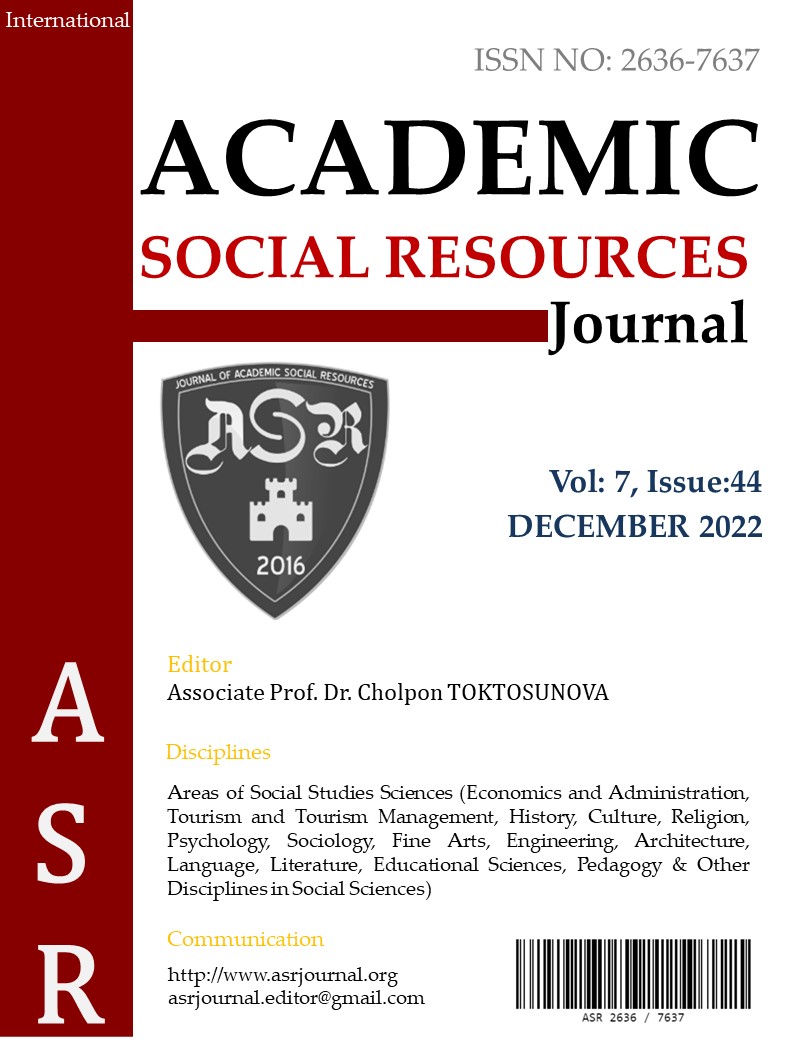Author :
Abstract
Bu makalede, modern insanın pozitivist ve materyalist zihninin bir çıktısı olarak değerlendirilen ve sıklıkla modernizmin simgesi olarak isimlendirilen “arı” soyut (metafizik) sanatın tarihsel sınıflandırması irdelenecektir. Çalışma, modern soyut sanatın keşfini yirminci yüzyılın ilk yarısında, biçimsel ve kuramsal açılardan gerçekleştiren sanatçılara ve onların geliştirdikleri estetik üsluplara odaklanmaktadır. Tarihsel çalışmalarda yaygın olarak biçimci yaklaşımlar şeklinde tanımlanan; soyut sanat, biçimsel indirgemenin mantıksal sonucudur ve içeriksizdir. Bu özellikleriyle modern pozitivist zihnin bir yansıması olarak kabul edilen soyut sanat, anlamlandırma bakımından dile geçirgensizdir, sessizdir. Bu yönelim, soyut sanatın kuramsal yönünü göz ardı eder. Buna karşılık ise soyut sanatın kavramsal köklerinin genel anlamda idealist felsefeye, Worringer’in soyutlama içtepisine ve Spiritüalist pratiklere dayandığı gözlemlenir. Tüm bu yaklaşımların kesişiminde ise materyalizm karşıtı senkretik söylemler bulunur. Bu senkretik söylemler ise; ilkele öykünme, soyut sanat istenci, metafizik evren algısı ve Platon’dan beri süregelen ikili varlık algısının etrafında şekillenir. Biçimci yaklaşımların eleştirileri ise soyut sanatın metafizik bağlamının, dilinin veya teorisinin araştırılmasını ve kavramsal olarak açıklanmasını önerir. Böylece soyut sanata atfedilen sessizlik özelliği, teorisi bağlamında değerlendirilerek tartışılabilir. Bu çalışmada, soyut sanatı mantıksal bir indirgeme olarak sınıflandırmak yerine, kavramsal açıdan inceleyerek konumlandırmanın gereklilikleri tartışılacaktır. Biçimci sınıflandırmalar açıklanırken kuramsal incelemeler sonucunda açığa çıkan çelişkiler tespit edilecektir. Bu çelişkilere dikkat çekerek, soyut sanatın tarihsel ve kuramsal çalışmalarının söylemsel açıdan zenginleştirilmesi hedeflenmektedir.
Keywords
Abstract
The historical classification of “pure” abstract (metaphysical) art, which is considered as an output of the positivist and materialist mind of modern man and is often called the symbol of modernism, is going to be examined, in this article. The study focuses on the artists who made the discovery of modern abstract art in the form, in the theory and in the aesthetic styles they developed in first half of the twentieth century. Commonly defined as formalist approaches in historical studies; abstract art is the logical result of formal reduction and is devoid of subject. In this sense abstract art, which is accepted as a reflection of the modern positivist mind, is imperviousness to the language and is silent in terms of meaning. This orientation ignores the theoretical aspect of abstract art. On the other hand, it is observed that the conceptual roots of abstract art are generally based on idealist philosophy, Worringer's impulse to abstraction and Spiritualist practices. At the intersection of these approaches, there are syncretic discourses against materialism. These syncretic discourses are; shaped around imitation of the primitive, the will to abstract art, the perception of metaphysical universe and the perception of dual existence that has been going on since Plato. Criticisms of formalist approaches suggest investigating and conceptually explaining the metaphysical context, language or theory of abstract art. Thus, the feature of silence, as it is attributed to the abstract art can be discussed in the context of its theory. In this study, instead of classifying abstract art as a logical reduction, the necessity of positioning it by examining it from a conceptual point of view is going to be discussed. While explaining the formalist classifications, the contradictions that emerged as a result of the theoretical investigations is going to be determined. It is aimed to enrich the historical and theoretical studies of abstract art from a discursive point of view by drawing attention to the contradictions.





